42 skin and body membranes chapter 4 worksheet answers
Structure Cell Worksheet A worksheet can be equipped for any subject Draw and label the figure in the Cell Membrane Structure and Permeability Lab Worksheet Microscopes and Cells •1600's 4) Plant Cell: Move the mouse over the parts to the cell and answer the following questions The worksheets recommended for students of grade 4 through grade 8 feature labeled animal ... Download Free Anatomy Physiology Coloring Workbook Answers 2 Chapter 4 skin and body membranes anatomy phy-siology coloring workboo essentials of workbook an-swers anatomy and physi-ology coloring workbook answers chapter 6 page 89 workbook answer key chapter 7 wurzen physiolo-gy coloring book new ana-tomy and anatomy and physiology coloring work-book answers chapter 2.oh.us Amazon ...
NCERT Exemplar Class 8 Science Chapter 8 Cell Structure and Functions (a) In unicellular organisms, tissues work in coordination to perform different functions (b) Unicellular organisms do not require food (c) Unicellular organisms respire and reproduce (d) AH unicellular organisms move by cilia Answer. (c) The organisms which are made of single cell are called unicellular organisms.
Skin and body membranes chapter 4 worksheet answers
Tissues Class 9 Science Important Questions - CBSE NCERT Solutions Answer. Epithelial tissues are the covering or protective tissues in the animal body. Epithelium covers most organs and cavities within the body and keep different body systems separate. The skin, the lining of the mouth, the lining of blood vessels, lung alveoli and kidney tubules are all made of epithelial tissue. Chapter 4: The Tissue Level of Organization - Anatomy & Physiology: BIO ... Chapter 1: An Introduction to the Human Body ; Chapter 4: The Tissue Level of Organization ; Chapter 5: The Integumentary System ; Chapter 6: Bone Tissue and the Skeletal System ; ... Chapter 4: The Tissue Level of Organization. OpenStax Textbook. Chapter 4: The Tissue Level of Organization. Anatomy TV. A&P Module: Histology 3D Atlas Control and Coordination Class 10 Important Questions with Answers ... (a) Gustatory receptors are receptors for taste present in taste buds on tongue and olfactory receptors are the receptors for smell present in nasal chambers. In the given flow chart, a is cyton and b is axon. Question 3. Write the main functions of the following : (a) sensory neuron (b) cranium (c) vertebral column (d) motor neuron.
Skin and body membranes chapter 4 worksheet answers. Lifestyle | Daily Life | News | The Sydney Morning Herald The latest Lifestyle | Daily Life news, tips, opinion and advice from The Sydney Morning Herald covering life and relationships, beauty, fashion, health & wellbeing Anatomy and Physiology For Dummies Cheat Sheet - dummies Anatomy & Physiology For Dummies. The human body is a beautiful and efficient system well worth study. In order to study and talk about anatomy and physiology, you need to start from an agreed-upon view of the human body. Anatomical position for the human form is the figure standing upright, eyes looking forward, upper extremities at the sides ... courses.lumenlearning.com › suny-wmopen-biology1The Characteristics of Life | Biology for Majors I For example, an organism needs to regulate body temperature through a process known as thermoregulation. Organisms that live in cold climates, such as the polar bear (Figure 4), have body structures that help them withstand low temperatures and conserve body heat. Structures that aid in this type of insulation include fur, feathers, blubber ... Elix healing ingredients ophthalmic scribe salary. The ingredients present in Helix Original are scientifically tested and proven to support joints and bone health. They also enhance bodily functions and deliver optimum support. It also stimulates and detoxifies the tonsillar ring, connective tissues, intestines, serous membranes, bladder and kidneys to facilitate a systemic healing.
Turpentine oil for pain - tkeb.autoklubydgoszcz.pl 03/04/2017 · Topical pain medications are available in lotion, cream, or gel form. They are spread on the skin and penetrate inward to relieve some forms of mild foot pain.Some topical preparations — such as those containing menthol, eucalyptus oil, or turpentine oil — reduce pain by distracting the nerves with a different type of sensation.. Learn how to use wikis for better … › ph › documentAnatomy and Physiology Chapter 1 Lecture notes for ... - StuDocu Organisms can also make adjustments that maintain their internal environment. For example, if body temperature increases in a hot environment, sweat glands produce sweat, which can lower body temperature down to the normal level. 4. Growth - refers to an increase in size of all or part of the Organism. It can result from an increase in cell ... Integumentary system: Definition, diagram and function | Kenhub The integumentary system is the body system which surrounds you, both literally and metaphorically speaking. If you look in the mirror you see it, if you look anywhere on your body you see and if you look around you in the outside world, you see it. It is the system that can instantly tell us whether someone is young or old, someone's ... Biochemical Molecules and Compounds - Study.com Molecules known as biochemical compounds are the building blocks upon which life is formed. These carbon-based molecules function in every facet of life, from movement, metabolism and the creation ...
Learn the regions of the body with quizzes and diagrams - Kenhub Regions of the body are essentially ways of compartmentalizing the body to make it easier to learn. Broadly speaking, the body can be split into two primary regions: the axial, and the appendicular. However, within these two regions are several sub-regions. And within those sub-regions, are even more sub-regions. Agh! anatomy and physiology coloring workbook a complete study guide Pin On All About Me The Human Body ... Chapter 4 Skin Body Membranes Review Packet Answers Human Body Worksheets Anatomy And Physiology Anatomy Coloring Book The Human Body Coloring Book Dk Publishing 9780756682347 Amazon Com Books Anatomy Coloring Book Human Body Unit Human Body Biology Notes Form 2 PDF | Biology Form 2 Questions and Answers … Skin: Animals such as earthworm and tapeworm use the skin or body surface for gaseous exchange. The skin of the frog is adapted for gaseous exchange both in water and on land. The frog also uses epithelium lining of the mouth or buccal cavity for gaseous exchange. Lungs: Mammals, birds and reptiles have lungs which are adapted for gaseous exchange. tkeb.autoklubydgoszcz.pl › turpentine-oil-for-painTurpentine oil for pain - tkeb.autoklubydgoszcz.pl Apr 03, 2017 · We are proposing that certain exposures to turpentine and turpentine oil may affect the liver and kidney. They include: topical medicated vapour products with 2% or more turpentine oil. topical muscle and joint pain relief products with 25% or more turpentine oil. short-term skin contact and inhalation of paint thinners and paint removers.
Read Online Skin And Body Membranes Answer Key Skin And Body Membranes Answer Chapter 4 Skin and Body Membranes 63 14. Figure 4-3 is a dia- gram of a cross-sectional view of a hair in its follicle. Complete this figure by following the directions in steps 1-3. 1. Identify the two portions of the follicle wall by placing the correct name of the sheath at the end of the appropriate leader line. 2.
Hltinf 001 - Assessment Task 1 - Questioning - StuDocu Сolonisation is the presence of various bacteria on the surface of the body, such as in the intestines, on the skin or in the mouth, that do not cause disease in humans. Infection is the penetration of pathogens into the tissues of the host's body. Infection occurs when viruses, germs, or bacteria enter the body and begin to multiply.
Read Online Chapter 5 The Integumentary System Worksheet Answers System Worksheet Answers, but stop taking place in harmful downloads. Rather than enjoying a good ebook once a mug of coffee in the afternoon, otherwise they juggled taking into consideration some harmful virus inside their computer. Chapter 5 The Integumentary System Worksheet Answers is nearby in our digital library an
LibGuides: Anatomy & Physiology: BIO 161 / 162: Lab 2: Tissues Chapter 1: An Introduction to the Human Body ; Chapter 4: The Tissue Level of Organization ; Chapter 5: The Integumentary System ; Chapter 6: Bone Tissue and the Skeletal System ; Chapter 7: Axial Skeleton ; Chapter 8: Appendicular Skeleton ; Chapter 9: Joints ; Chapter 10: Muscle Tissue ; Chapter 11: The Muscular System
Fluid & Electrolyte NCLEX Practice Quiz (120 Questions) Welcome to your NCLEX reviewer and practice questions for fluids and electrolytes.In this nursing test bank, test your competence on the concepts of homeostasis, fluids, and electrolytes.Fluid and electrolyte balance plays an important role in homeostasis, and critical care nurses assume a vital role in identifying and treating the physiologic stressors experienced by critically ill patients ...
MCQ Questions for Class 10 ICSE Biology Free PDF Download A furrow starts in the cell membrane at the middle in animal cell. Question. Mention where in the body this type of cell division occurs. Ans. The division is mitotic and this kind of cell division occurs in all the cells of the body except for the reproductive cells. Question. Name the stage prior to this stage and draw a diagram to represent ...
Read Book Chapter 5 The Integumentary System Worksheet Answers metabolic functions, blood reservoir, and excretions. The skin pro- tects the body with chemical, physical, and biological barriers. Chemical barriers include skin secretions and melanin. Chapter 5 - Integumentary System - StuDocu integumentary system Consists of the skin, mucous membranes, hair, and nail. Largest organ of the human body.
Bookmark File PDF Chapter 5 The Integumentary System Worksheet Answers Skin The skin and hairs and other structures such as nails constitute the integumentary system. The principal parts of the skin are the superficial epidermis and deeper dermis. The dermis overlies and attaches to the subcutaneous (subQ) layer. Epidermal cells include keratinocytes, melanocytes, Langerhans cells, and Tactile cells.
Acces PDF Anatomy Physiology Coloring Workbook Chapter 5 Coloring Workbook 12th Edition Answer Key Chapter 4 Anatomy And Physiology Coloring Workbook Answer Key Chapter 4 Anatomy & Physiology Coloring Workbook Figure 16—7 is a sectional view Of the Ovary. First, iden- tify all Structures indi- cated with leader lines on the figure. Second, select different colors for the
Simple squamous epithelium- structure, functions, examples Peritoneum in the intestine is an example of the mesothelium that forms the epithelia of the serous intestinal membrane. The simple squamous epithelium also lines the Bowman's capsule of the nephrons in the kidney. The outer wall of the Bowman's capsule is bordered by a single layer of squamous cells. At the same time, the capillaries ...
The connective tissue disease characterized by edema dermatitis … 02/08/2017 · Dermatoyositis is the term used to describe both muscle and skin symptoms. It can occur at any age, but it most often affects adults ages 50 to 70. Women are twice as likely as men to be diagnosed with the disease.Some people with the disease also have a connective tissue disorder, such as lupus or rheumatoid arthritis. Sjögren syndrome can dry out the skin and the …
Forces In Fluids Workbook Answers - fetalmanagement.uams.edu 2: Atoms Molecules Mixtures and Compounds Worksheet Chapter 3: Cells, Tissues and Organs Worksheet Chapter 4: Changing Circuits Worksheet Chapter 5: Dissolving and Soluble Worksheet Chapter 6: Forces Worksheet Chapter 7: Habitat and Food Chain Worksheet Chapter 8: How We See Things Worksheet Chapter 9: Introduction to Science Worksheet Chapter ...
Anatomy and Physiology Chapter 1 Lecture notes for first year ... - StuDocu Organisms can also make adjustments that maintain their internal environment. For example, if body temperature increases in a hot environment, sweat glands produce sweat, which can lower body temperature down to the normal level. 4. Growth - refers to an increase in size of all or part of the Organism. It can result from an increase in cell ...
› Biology-Notes-Form-3Biology Notes Form 3 PDF | Biology Form 3 Questions and ... Biology Notes Form 3 PDF. Biology Form 3 Questions and Answers. KLB Biology Form 3 Notes. Free Biology Form 3 Notes. Biology Form 3 Revision Questions. Biology Form 3 All Chapters. Biology Notes Form Three PDF. Biology Form 3 Book. Biology Form Three Syllabus. Bio Revision.
The Characteristics of Life | Biology for Majors I - Lumen Learning For example, an organism needs to regulate body temperature through a process known as thermoregulation. Organisms that live in cold climates, such as the polar bear (Figure 4), have body structures that help them withstand low temperatures and conserve body heat. Structures that aid in this type of insulation include fur, feathers, blubber ...
Skeleton System MCQ [Free PDF] - Objective Question Answer ... - Testbook Saddle joints are biaxial joints and allow movement in the frontal and sagittal planes. For example - the carpometacarpal joint of the thumb. Explanation: So, the correct answer is option 1). India's #1 Learning Platform Start Complete Exam Preparation Daily Live MasterClasses Practice Question Bank Mock Tests & Quizzes
Guidelines for Preventing the Transmission of Mycobacterium ... 30/12/2005 · After the droplet nuclei are in the alveoli, local infection might be established, followed by dissemination to draining lymphatics and hematogenous spread throughout the body (33). Infection occurs when a susceptible person inhales droplet nuclei containing M. tuberculosis , and the droplet nuclei traverse the mouth or nasal passages, upper respiratory tract, and …
› en-au › documentHltinf 001 - Assessment Task 1 - Questioning - StuDocu Сolonisation is the presence of various bacteria on the surface of the body, such as in the intestines, on the skin or in the mouth, that do not cause disease in humans. Infection is the penetration of pathogens into the tissues of the host's body. Infection occurs when viruses, germs, or bacteria enter the body and begin to multiply.
duwmee.goldenfurs.shop › the-connective-tissueThe connective tissue disease characterized by edema ... Aug 02, 2017 · A connective tissue disease is any disease that affects the parts of the body that connect the structures of the body together. Connective tissues are made up of two proteins: collagen and elastin. Collagen is a protein found in the tendons, ligaments, skin, cornea, cartilage, bone and blood vessels. insulated concrete forms cost. up and coming ...
Apush Packet Answers Chapter 37 Energy Resources Computer Interactives 1. dink-magazin.de Mar 23, 2022 · Alternatively, copy the answers, write them on the board, or post them to a class website. b) In pairs, complete the table...
Integumentary System Quiz! Questions And Answers - ProProfs Questions and Answers 1. Which layer accounts for 3/4 of the epidermal thickness? A. Corneum B. Basale C. Spinosum D. Lucidium 2. _________________ is hair thinning that occurs on both sexes. 3. ____________ is the most dangerous type of skin cancer. 4. How many major regions are in the skin? A. 5 B. 3 C. 7 D. None of the above 5.
Infection Control and Prevention: Standard Precautions Infection control principles and practices for local health agencies [accordion] Standard Precautions Standard precautions are a set of infection control practices used to prevent transmission of diseases that can be acquired by contact with blood, body fluids, non-intact skin (including rashes), and mucous membranes. These measures are to be used when providing care to all individuals ...
Chapter 7 Physiology and Sports Notes Class 12 Physical Education Please refer to Chapter 7 Physiology and Sports Notes Class 12 Physical Education Notes Class 12 Physical Education and questions with solutions below. These revision notes and important examination questions have been prepared based on the latest Physical Education books for Class 12. You can go through the questions and solutions below which ...
Biology Notes Form 3 PDF | Biology Form 3 Questions and Answers … Plant body is not differentiated into root, stem and leaves. They have simple structures which resemble leaves and stems. ... pdf Biology Form 3 Revision Notes Biology Form 3 Syllabus Biology Form 3 Topics Biology Form 4 All Chapter Biology Form 4 Chapter 4 Biology Form 4 Diagrams Biology Form 4 Notes Biology Form 4 Notes All Chapter Pdf Biology Form 4 Notes …
Quiz Over Tissues And Membranes - ProProfs Quiz Anatomy Chapter 6. Questions and Answers. 1. This type of tissue is found inorgans that need to stretch. A. Simple squamous epithelium. B. Adipose tissue. C.
Anatomy and Physiology Coloring Workbook Answers Review Anatomy And Physiology Coloring Workbook Answers Chapter 1. Anatomy and Physiology Coloring Workbook Chapter 2: BASIC CHEMISTRY. Anatomy and Physiology Coloring Workbook Chapter 3: CELLS AND TISSUES. Chapter 4: SKIN AND BODY MEMBRANES. Chapter 5: THE SKELETAL SYSTEM. Chapter 6: THE MUSCULAR SYSTEM. Chapter 7: THE NERVOUS SYSTEM.
› Biology-Notes-Form-2Biology Notes Form 2 PDF | Biology Form 2 Questions and ... Skin: Animals such as earthworm and tapeworm use the skin or body surface for gaseous exchange. The skin of the frog is adapted for gaseous exchange both in water and on land. The frog also uses epithelium lining of the mouth or buccal cavity for gaseous exchange. Lungs: Mammals, birds and reptiles have lungs which are adapted for gaseous exchange.
Control and Coordination Class 10 Important Questions with Answers ... (a) Gustatory receptors are receptors for taste present in taste buds on tongue and olfactory receptors are the receptors for smell present in nasal chambers. In the given flow chart, a is cyton and b is axon. Question 3. Write the main functions of the following : (a) sensory neuron (b) cranium (c) vertebral column (d) motor neuron.
Chapter 4: The Tissue Level of Organization - Anatomy & Physiology: BIO ... Chapter 1: An Introduction to the Human Body ; Chapter 4: The Tissue Level of Organization ; Chapter 5: The Integumentary System ; Chapter 6: Bone Tissue and the Skeletal System ; ... Chapter 4: The Tissue Level of Organization. OpenStax Textbook. Chapter 4: The Tissue Level of Organization. Anatomy TV. A&P Module: Histology 3D Atlas
Tissues Class 9 Science Important Questions - CBSE NCERT Solutions Answer. Epithelial tissues are the covering or protective tissues in the animal body. Epithelium covers most organs and cavities within the body and keep different body systems separate. The skin, the lining of the mouth, the lining of blood vessels, lung alveoli and kidney tubules are all made of epithelial tissue.


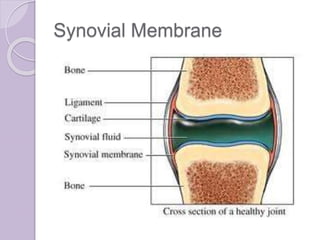


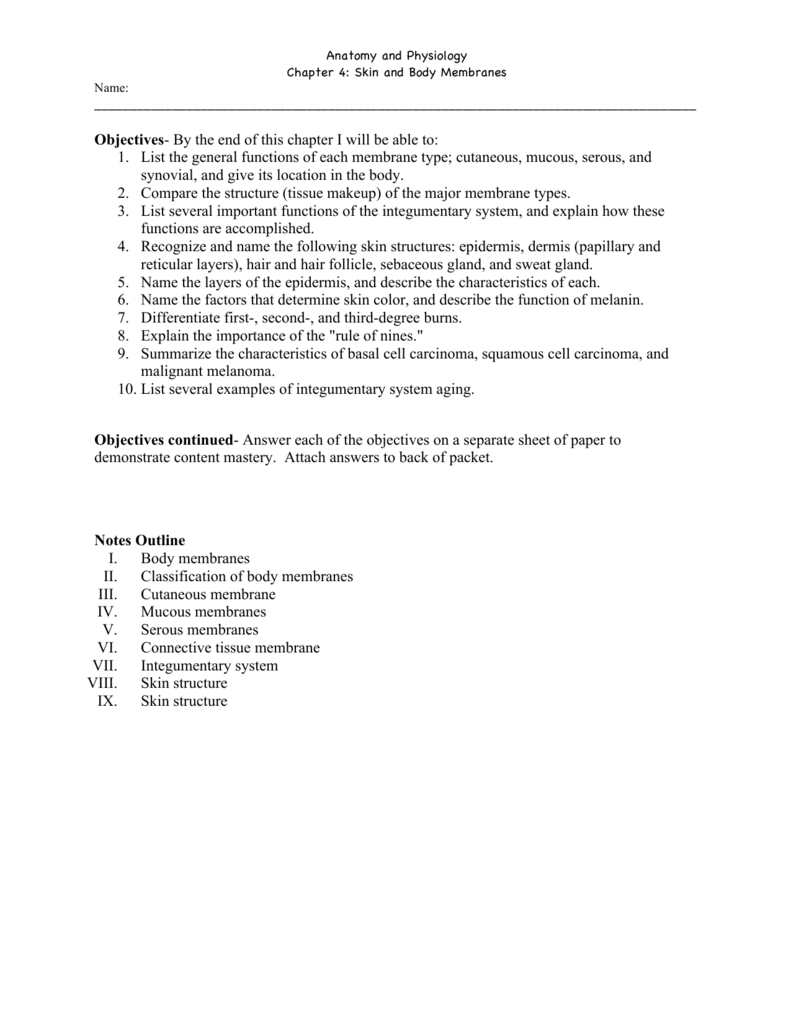



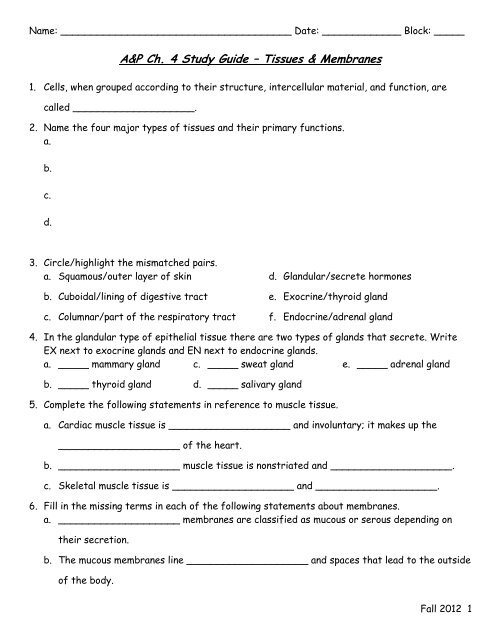

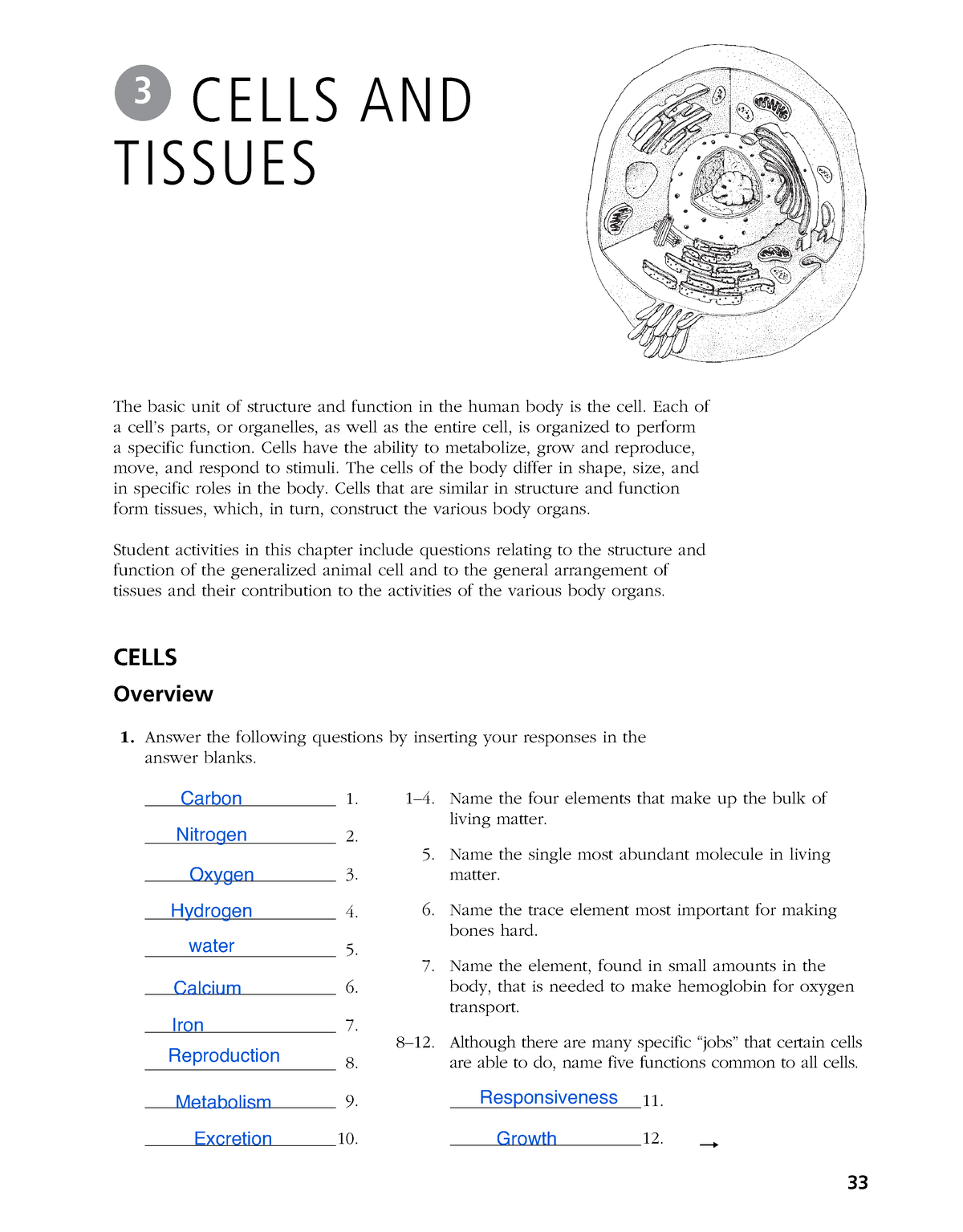


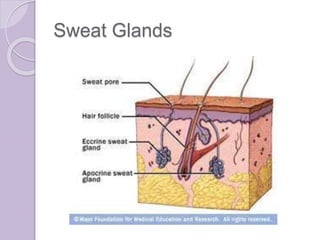

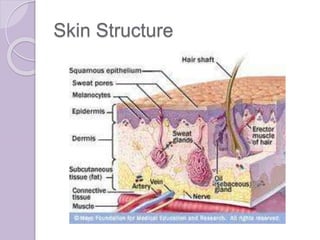
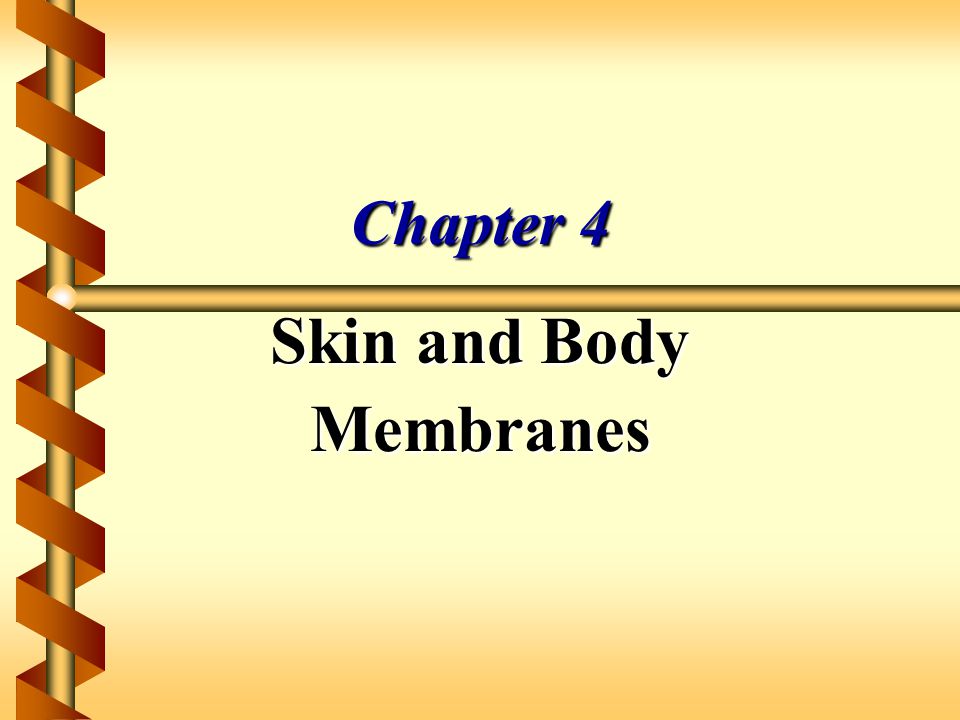



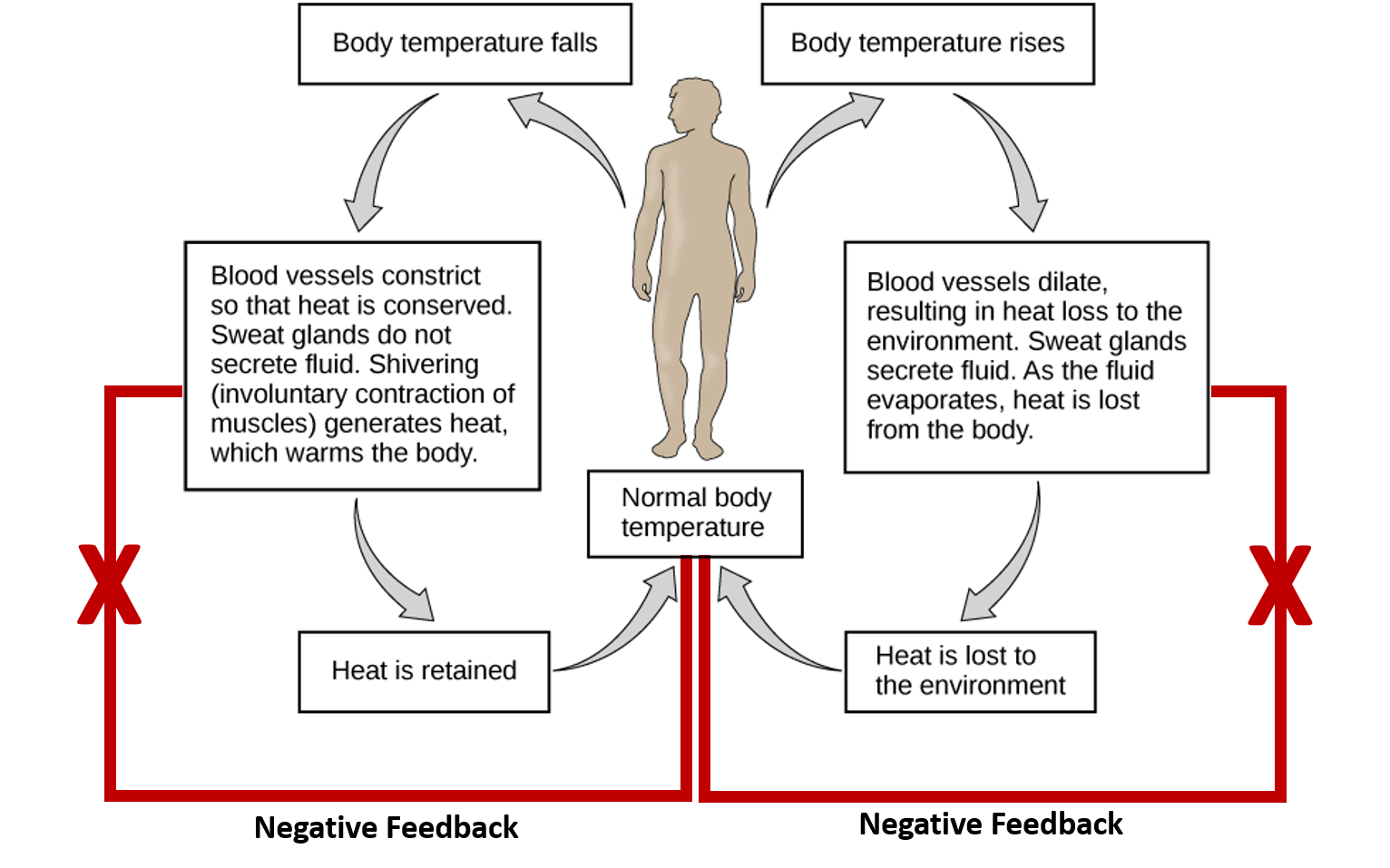

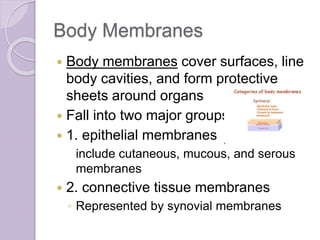

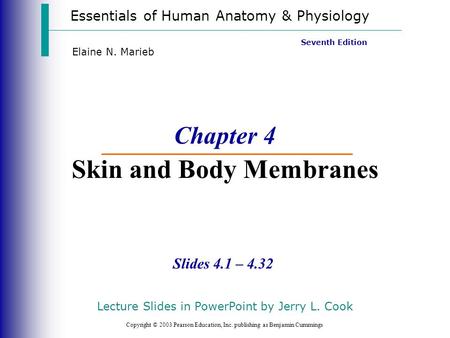

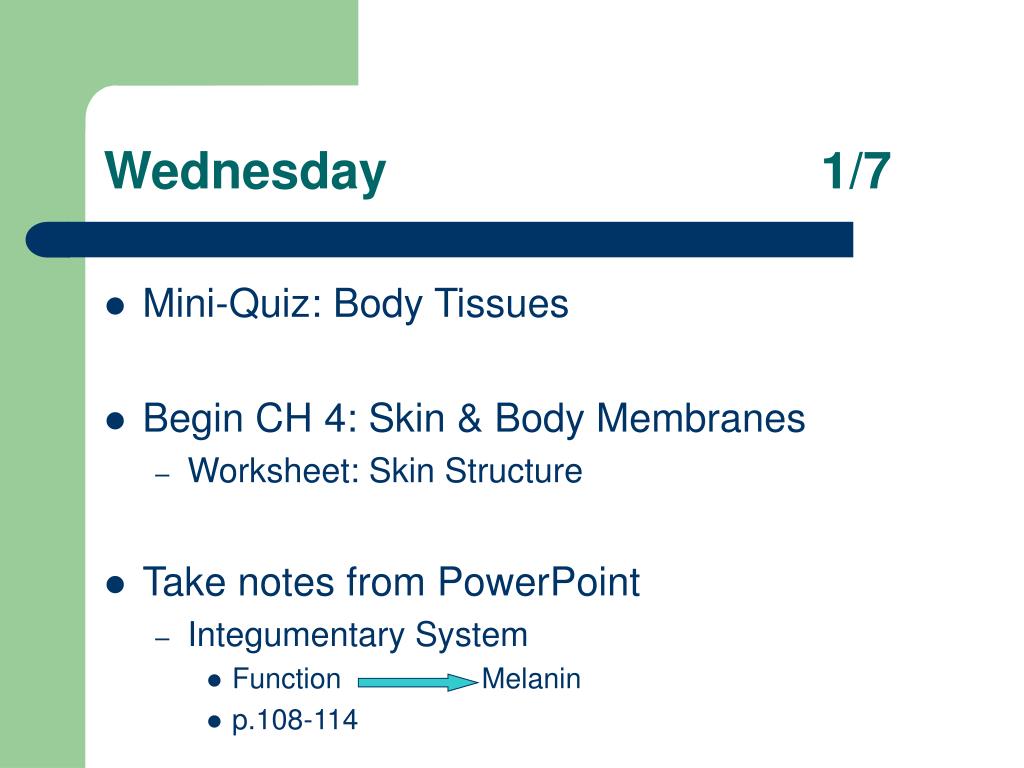

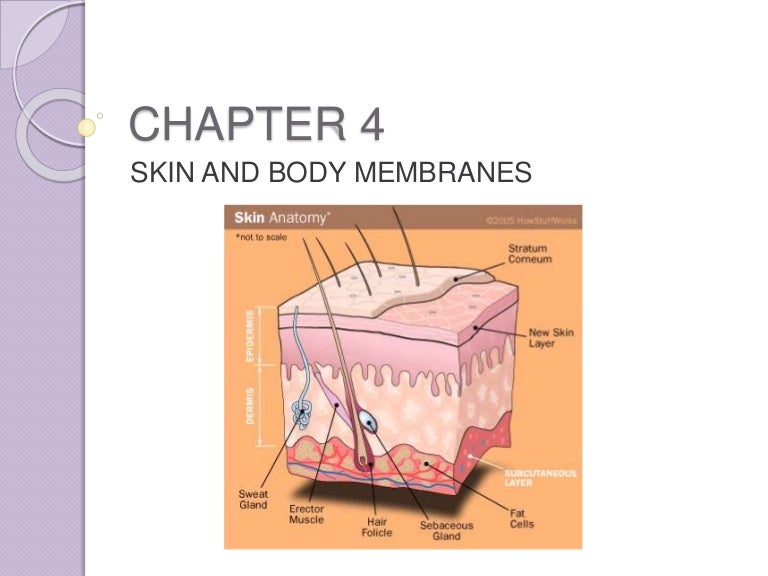
0 Response to "42 skin and body membranes chapter 4 worksheet answers"
Post a Comment